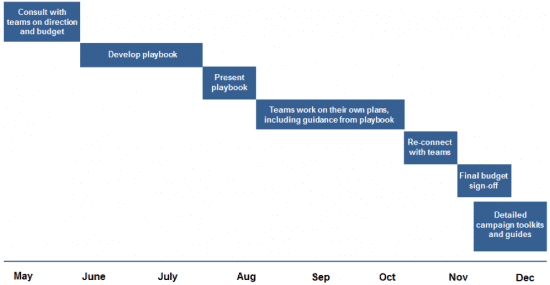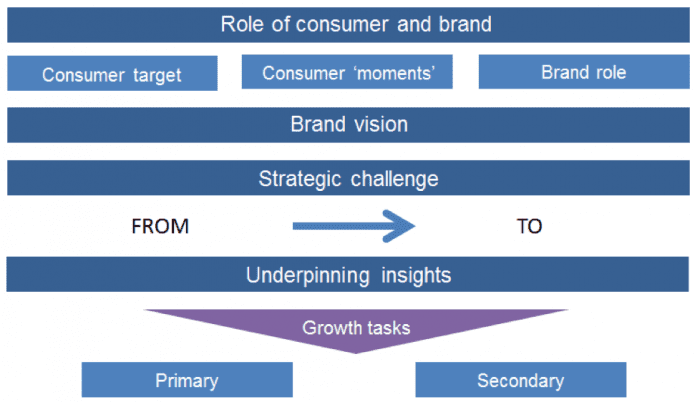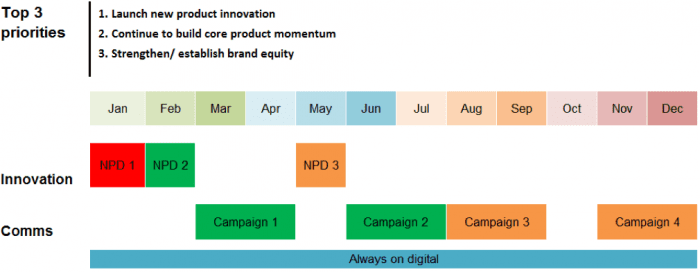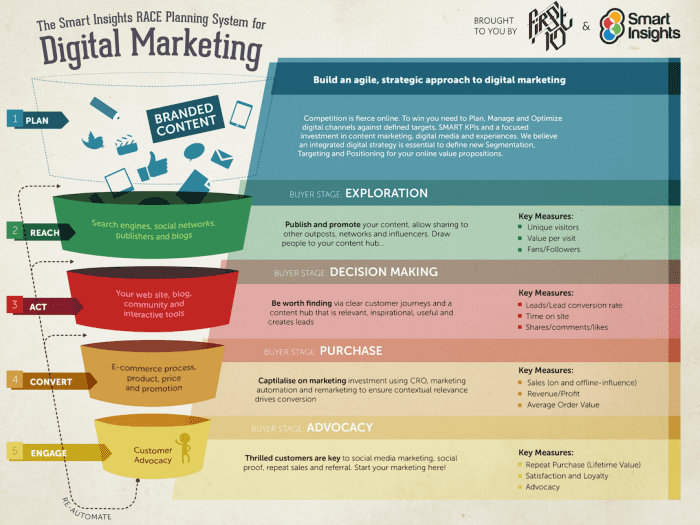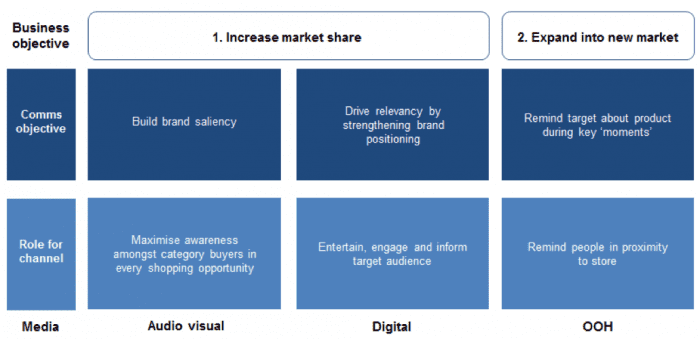
More than 22 percent of Germany’s workforce is in the manufacturing sector. (Photo: Jens Meyer/Associate Press)
Our latest Freakonomics Radio episode is called “What Are the Secrets of the German Economy — and Should We Steal Them?” (You can subscribe to the podcast at Apple Podcasts or elsewhere, get the RSS feed, or listen via the media player above.)
Smart government policies, good industrial relations, and high-end products have helped German manufacturing beat back the threats of globalization.
Below is a transcript of the episode, modified for your reading pleasure. For more information on the people and ideas in the episode, see the links at the bottom of this post.
* * *
Unless you’ve managed to totally tune out every American politician, you’ve probably heard that our manufacturing sector has been crushed.
Bernie SANDERS: We have had, for the last 30+ years, disastrous trade policies.
President TRUMP: We’ve lost 60,000 factories since China joined the World Trade Organization in 2001.
The consensus estimate is that we’ve lost about five million manufacturing jobs since 2000. There are a number of factors — but clearly, one of them has been global trade.
David AUTOR: We estimate that as much as 40 percent of the drop in U.S. manufacturing between 2000–2007 is attributable to the trade shock following China’s accession to the W.T.O. in 2001.
That’s David Autor, a labor economist at M.I.T. You may remember him from an earlier episode of ours called “Did China Eat America’s Jobs?” Short answer: yes, at least a good portion of them. Autor points out there were gains in non-manufacturing sectors, which more than offset the number of lost manufacturing jobs. But these new jobs typically pay less and leave workers worse off. Or, as an economist would put it:
AUTOR: The reallocation process seems to be slow, frictional, and scarring.
The U.S. is hardly alone in losing those good old high-paying manufacturing jobs. Many big, old, successful western economies have suffered the same fate. This downturn has changed our politics. In the U.S. …
TRUMP: We can’t continue to allow China to rape our country and that’s what they’re doing.
And elsewhere …
Gerard BAKER on CBS This Morning: You see it in the U.K. vote to leave the E.U. You’re seeing it in other parts of Europe — a spread of this desire to kick back against globalization.
But there’s one big, rich, Western country that’s different.
Jens SUEDEKUM: We don’t hear that anti-globalization, anti-China rhetoric.
A country whose manufacturing sector has proved remarkably resilient.
SUEDEKUM: The United States, the manufacturing share today is below 9 percent. We still have 22 percent of the workers active in manufacturing.
It’s a country that not only doesn’t have a trade deficit, but has one of the largest trade surpluses in the world.
Dalia MARIN: The exporting sector is doing very well. It’s a good sign.
So what is this übermensch of a country?
SUEDEKUM: At the moment, there’s a bit of euphoria in Germany. The economy’s doing great and unemployment has almost disappeared.
That’s right: Germany.
SUEDEKUM: At the moment, the mood is good here. But Germans are also melancholic people.
Today on Freakonomics Radio: how did the German economy go from rubble to rock star?
Daniel STURM: Germany has a very unusual economic geography.
MARIN: Germany is not a shareholder economy, it’s a stakeholder economy.
Uwe REINHARDT: In Germany, the unions have representatives on the board of the company.
And: what would happen if the U.S. tried to copy the German model?
* * *
I’d like you to meet Jens Suedekum.
SUEDEKUM: Hello. I’m [a] professor of economics at Dusseldorf University.
His research specialty?
SUEDEKUM: I do research in international trade.
A few years back, Suedekum and his colleagues read the research that David Autor and his colleagues published about the American manufacturing crash.
SUEDEKUM: The tone was very negative in the United States — that China cost millions of jobs, put so many people out of work, led to reduced wages. Basically, we wanted to understand if that’s also going on in Germany.
Suedekum applied the same research methodology to Germany. He found that, as in the U.S., some German industries did suffer a lot because of low-cost Chinese manufacturing. But …
SUEDEKUM: But, on the other hand, the overall conclusion that comes from our study is much more positive. The important difference is that Germany managed to take advantage of this gigantic export market.
The “gigantic export market” being, primarily, China.
SUEDEKUM: If you add both together, then trade basically had zero impact on the manufacturing share itself in Germany.
Why was Germany able to find an economic equilibrium that has escaped so many other countries? To find that answer — and to appreciate the magnitude of this economic turnaround — we have to go back in time a bit. Let’s start just after World War II.
REINHARDT: Germany was basically rubble and demoralized; for very good reasons, in deep shame.
Uwe Reinhardt is an economist at Princeton. He was born in 1937 in the countryside near Cologne.
REINHARDT: By and large we young people had this burden of shame put on our shoulder. We never asked for that, but we had it. I sometimes think one outlet is to work like hell and say, “Let’s just work and see if at some point we will once again be”— the German word is salonfähig, meaning, “be fit to be invited to a civilized party.” We worked hard. Everyone worked hard. I worked in Cologne as an apprentice. Everything was rubble. Then you saw, year by year, “Here was rubble. There is a new building now.” You literally saw Germany grow again.
Germany’s growth was helped along by American financial aid. Here’s U.S. Secretary of State George Marshall, nearly two years after the end of the war, speaking at Harvard, where he was receiving an honorary degree.
George MARSHALL: Ladies and gentleman, I’m profoundly grateful.
Marshall used this occasion to announce a plan to rebuild Europe.
MARSHALL: The truth of the matter is that Europe’s requirements for the next three or four years of foreign food and other essential products — principally from America — are so much greater than her present ability to pay that she must have substantial additional help, or face economic, social and political deterioration of a very grave character.
The Marshall Plan sent a lot of money to Europe — the equivalent of more than $100 billion today.
Jeromin ZETTELMEYER: Initially there was a bit of a controversy whether Germany, in particular, should be a recipient of Marshall aid.
That’s Jeromin Zettelmeyer. Until recently, he was a senior official in Germany’s Ministry for Economic Affairs; now he’s a senior fellow at the Peterson Institute for International Economics.
ZETTELMEYER: But, as the politics changed after the war and the Cold War became the most pressing issue — containment of the Soviet Union — it was very quickly decided that Germany would get Marshall Plan aid. It played a big role in German post-war reconstruction.
Reconstruction, that is, in West Germany.
STURM: It’s well known that in the wake of the Second World War, Germany was occupied.
The economist Daniel Sturm grew up in Germany and now teaches at the London School of Economics. His specialty is called spatial economics.
STURM: Spatial economics is an umbrella term the role of space in economic activity. That could be space across countries as studied in international trade, that could be space across regions or the role of space within cities.
You can see where is this going, can’t you? After the war, Germany was divided and occupied by the Allied powers. For a spatial economist who happens to be from Germany, this division would provide a perfect natural experiment. There was West Germany …
STURM: … which was the combination of the American, British, and French zone …
And East Germany …
STURM: … which was the Soviet zone.
The border between West and East Germany was also a border between capitalism and communism. In the West, cities like Hamburg, Bonn, Frankfurt, and Munich began to rebuild, and resumed their capitalist pursuits. Not so in the East. And Berlin lay firmly in the east. Before the war, it was the capital of Germany, easily its largest city, and an economic powerhouse. Now, it too was divided — eventually by the Berlin Wall. West Berlin was officially a part of West Germany. But it was an island of capitalism in a sea of communism.
STURM: A lot of industries are forced to relocate and find new homes in West Germany.
And so it was for four decades. Until November 9th, 1989 — the fall of the Berlin Wall.
ABC NEWS: Just a short while ago, astonishing news from East Germany …
BBC NEWS: Within hours of East Germany’s decision to let its people go by opening the border to the West, the city erupted in frenzy of celebration.
CBS NEWS: Tens of thousands of young Berliners are on the Berlin Wall.
STURM: When the Berlin Wall came down, I was serving in the Army. There was still conscription at the time. I was a lorry driver, so I was servicing the spatial economy, transporting goods around for the German army. But I had no training in economics at that point.
But years later, Sturm the economist began to examine the economic data generated by the political divisions.
STURM: One of the classic questions in spatial economics is the question, “Why do people, firms and workers, locate where they locate?” There [are] two, big competing theories: one is there’s something fundamentally good about some locations, maybe access to a river, nice weather, or other locational advantages. The competing theory is that it’s really cumulative causation. Once a critical mass of economic activity has been established in a location, people will gravitate to that location, so there’s nothing inherently good about the location other than that many other people have decided to locate in that location as well. Trying to distinguish between these two explanations, unfortunately, is very difficult.
Difficult especially when you can’t run experiments in economics the way you can in other fields. When you can’t, say, divide a country in half, and cordon off its most important city to see what happens there. But of course that’s essentially what happened in Germany. Before the war, many large industries were concentrated in Berlin. But they shriveled during the Cold War. Now, after reunification, Daniel Sturm and a colleague, Steve Redding, took advantage of this shock to the system.
STURM: Once that shock dissipates, do we see that everything gravitates back to its old pre-war equilibrium, which would suggest that everything is driven by fundamentals? Or do we see that the new location pattern that was developed during division continues after reunification so that we don’t go back to the old pattern, but stay in the new pattern that has been developed during the shock period of division?
Granted, a city like Berlin can’t just flip a switch after 40 years and tell all its big companies to come home. They had built buildings! Their workers had homes there! Still, Sturm felt he could at least address the question by looking at the data. First stop: airplane-traffic data.
STURM: The main reason we looked at air hubs is it’s a sector where you get a lot of historical data.
Before the war, Berlin had the biggest airport in Germany.
STURM: It was, in fact, also the biggest airport in Europe.
But during the post-war occupation, a lot of airplane traffic migrated to Frankfurt — in part because the U.S. military had its main airbase there.
STURM: It took ‘til the mid-1970s for Frankfurt to take over the role as [the] hub airport for Germany and for Berlin to fall back into the role of a regional, provincial airport.
Okay, not that surprising that Berlin’s airport fell out of favor during the occupation. But what happened after reunification? Did Berlin recapture all that air traffic — or did Frankfurt retain its hold?
STURM: And that’s exactly what we find.
That is, Frankfurt retained its hold.
STURM: There’s no evidence of the pattern of air travel gravitating back to its old pattern.
To this day, Frankfurt has the biggest airport in Germany, with more than 60 million passengers a year. Berlin, while still easily the biggest city in Germany, has only the fourth- and seventh-busiest airports, which combined have only about half the traffic of Frankfurt.
STURM: Germany is the only European country where the country’s main air hub is not in the largest city. You can see the unusualness of the German situation. If [the] division hadn’t happened, it would be very difficult to believe that Germany’s main air hub today wouldn’t be in Berlin.
The air-traffic story is compelling because the data are so definitive. In other cases, it’s hard for an economist like Sturm to make such a clean comparison between cities. But, he argues, the anecdotal evidence at least suggests that the air-traffic data are part of a larger economic pattern.
STURM: If you look, for example, at Munich. Both Allianz, Germany’s biggest insurance company, and Siemens, its biggest manufacturing conglomerate, moved to Munich in response to [the] division. Similarly, the banking sector left Berlin and migrated to Frankfurt, which, prior to the war, was a secondary banking center. Publishing went to Hamburg and we can continue in this way.
In other words: one indirect consequence of the war, and the resultant political division, was that the German economy became more decentralized.
STURM: Germany has a very unusual economic geography or very unusual distribution of economic activity in space. It’s a much more decentralized country than some other European countries, such as the U.K., France, or even Spain, where economic activity seems to be highly agglomerated in one or two leading centers. In contrast in Germany, you have a number of mid-sized towns that have very vibrant economic structures such as Munich, Frankfurt, Hamburg, and many more.
Now, is economic decentralization necessarily a benefit? Cities like New York, London, Paris, and Tokyo might argue otherwise.
STURM: There’s a large literature that documents that there are returns to density. Bigger cities seem to be more productive. From that perspective, it may be better to concentrate economic activity in a few large cities.
But density also has its costs: higher housing prices and cost of living; more traffic congestion.
STURM: From that perspective, it may be better to spread economic activity apart.
So is it possible for economists to learn the optimal population distribution across a country’s cities?
STURM: The question is a tricky one, and one that, arguably, we have much less of [a] handle on understanding the full empirics and the importance of different effects. If we split London into two cities and moved one to the north of England and left one where it is right now, what exactly would be the implications for U.K. economic activity? It would be great if I could solve that question and provide you with a precise empirical estimate. But it’s something that is very difficult.
Okay, fair enough. Hard question to answer. But keep in mind it also has political implications. A lot of recent elections have seen populist momentum from outside major cities, with voters who feel the cosmopolitan elites don’t represent their economic interests.
STURM: One of the key obsessions of U.K. politics is to try and redistribute economic activity away from London to other parts of the U.K., which compared to London, are lagging. There is spatial inequality in Germany as well, but it’s not as extreme with Berlin being the vibrant place and everything else being a backwater. We have a number of cities that, in terms of per capita income, are very comparable. Maybe this is one of the reasons why Germany has, so far, weathered the populist tide.
Maybe but … maybe not. We spoke with Sturm before the recent German elections. Angela Merkel was easily re-elected as chancellor but the ruling coalition parties lost seats in Parliament to the Alternative for Germany party. It has an anti-immigrant platform and is especially strong in the former East Germany, where the economy isn’t nearly as strong as in the former West. Which suggests one of at least two things: the German economic miracle may be running into trouble; or, at the very least, the former East still has a lot of catching up to do. Including Berlin itself.
MARIN: I came to Berlin right after the fall of the wall.
That’s Dalia Marin. Today she teaches economics at the University of Munich; but at the start of reunification, she was at Humboldt University, in the former East Berlin.
MARIN: It was a very exciting moment because under communism, they had not really an economics department. They didn’t know anything about Keynes and Adam Smith. Under communism, they basically were teaching Marxism and Leninism. They didn’t know anything about the market because they were a planned economy. They had no alternative, then, to fire these people.
The firing of communist economists was one of many, many adjustments that came with reunification.
STURM: Reunification was a major economic shock.
Among the problems East Germany faced: a bloated socialist bureaucracy and dilapidated infrastructure; an unproductive workforce and massive government subsidies for food and housing; and, oh yeah, the lack of functional capitalist markets. The German government worked hard to bring East Germany back into the fold.
SUEDEKUM: There was a huge economic boom that came with it because there [were] massive infrastructure investments in the East.
STURM: There were also enormous transfers paid to try and jump-start the East German economy.
SUEDEKUM: There was huge euphoria about reunification but then this mood changed fairly quickly. In ‘93, ‘94, the country went into a hangover mood.
MARIN: Because it was difficult for West Germany to absorb East Germany.
One big difficulty was getting East and West using the same currency — the West German Deutsche Mark. Jeromin Zettelmeyer says the conversion happened at an even one-to-one rate, which had a huge effect on real wages.
ZETTELMEYER: Even though that did not translate into the same wage level in the East as in the West, wages went nonetheless higher than they would have been without that. So you have a period where effectively the wage levels in the East in hard currency exceed Eastern productivity and that produces more unemployment.
SUEDEKUM: To give you perspective, we had an unemployment rate in Germany in ‘91 [that] was roughly 5 percent; maybe 2 million unemployed people. But then in ‘97, the whole unemployment rate went up to 11, 12 percent. It was a dramatic period.
The drama, of course, didn’t end there.
ZETTELMEYER: And then you have Germany join the euro.
The euro had become the common currency of the European Union and Germany, unlike Britain, decided to embrace the euro as its currency. Zettelmeyer argues that from the German perspective, the euro was overvalued. That made German exports more expensive, which put a drag on their economy. Beyond that, the new scenario inspired an exodus of German capital.
ZETTELMEYER: The reason is that investment opportunities in the southern European countries suddenly looked more attractive.
In Spain, for instance.
MARIN: There was an extreme capital flight to Spain and the housing sector in Spain quadrupled. Part of the reason why that happened was because German households, in fact, bought houses in the nice parts of the beach of Spain.
But it wasn’t just German households moving their money. Companies did too. For years, countries like Spain and Portugal had been cheaper for a company to operate in. But they also came with their downsides: unfriendly business policies, the threat of high inflation, the occasional currency crisis. But now, as fellow E.U. nations using the common euro currency, Germans took a second look.
ZETTELMEYER: It was almost like having these countries sign up to this fitness plan and that made them very attractive.
Manufacturing in Germany, therefore, became less attractive.
ZETTELMEYER: And that made unemployment even worse.
So if you add up all these factors, some subtle and some quite blunt, you can see why Germany, by the early 2000s, was not in great economic shape.
SUEDEKUM: You had the impression that the German economy is about to fall off a cliff or something. That’s where this famous expression of “the sick man of Europe” was coined by The Economist.
So how did “the sick man of Europe” turn into the economic stud we see today?
SUEDEKUM: At first glance, this system looks pretty inflexible and rigid.
* * *
It’s no secret that the German economy is booming right now.
RT: The country is the economic engine of Europe, with enviable numbers on public and private debt, productivity growth, and employment ….
CGTN: This week Germany also announced a record trade surplus.
PBS: We Germans have 1 percent of the labor force of the world and we have 10 percent of the exports of the world.
But just 15 years ago, things were looking pretty grim. The country was struggling to reunify after the Cold War; adopting the euro had its downsides, including a flight of German capital from Germany; and unemployment was at nearly 12 percent.
SUEDEKUM: The talk shows were full of people arguing that Germany is not competitive. Wages are too high. The labor market is too inflexible. The Social Security system is too generous and we have to do something dramatic about it.
That, again, is the University of Dusseldorf economist Jens Suedekum.
SUEDEKUM: You can think of that period from ‘93 ‘til 2003 as a decade of stagnation. That was the mood that predated the Hartz reforms in 2003.
The Hartz reforms were named after Peter Hartz, a Volkswagen executive who became an adviser to Chancellor Gerhard Schröder. Schröder and his Social Democratic party had been elected to lead Germany in 1998.
SUEDEKUM: There was this impression that if somebody can reform the country, it’s going to be them because they’re Social Democrats. They have the unions on their side. [In] 2003, Schröder announces what he has called, “The Agenda 2010,” and the famous Hartz reforms, they were part of this agenda.
Among other changes, the Hartz reforms lowered government assistance to the poor and unemployed; made it easier for firms to fire employees; and encouraged more part-time, low-wage, non-union jobs. As you can imagine, such reforms did not make Schröder universally beloved.
SUEDEKUM: It had a huge political cost because he lost the left wing part of the Social Democrats. It cost Schröder the chancellorship. He lost the election in 2005 to Angela Merkel. But ultimately, the common narrative is those Hartz reforms created the turnaround.
That, at least, is the common narrative. Some economists think it’s more nuanced than that. That there are more factors to consider. Let’s start with Germany’s unique system of labor relations.
SUEDEKUM: At first glance, this system looks pretty inflexible and rigid.
And unusual in at least one other way. German manufacturing is not dominated by gigantic firms.
MARIN: One of the distinctive features of the German manufacturing sector is you see all these small- and medium-sized firms.
ZETTELMEYER: Germany is fairly unique in having companies with between a few hundred and a thousand employees that do a lot of exporting.
Such firms are often family-owned and typically receive government support; collectively, they’re known as the Mittelstand.
MARIN: The interesting thing is that, normally, when you have small and medium enterprises, they are not international. The major thing about the Mittelstand in Germany is that they are very international. I’m talking here about the export superstars.
SUEDEKUM: You have all these so-called “Hidden Champions” in Germany. These are medium-sized firms often located somewhere in the countryside. But they are the world market leader for some very specific niche product where they offer the highest quality.
Products like pipe organs. Or battery chargers. Or professional movie-making equipment. Or fish-processing machinery.
SUEDEKUM: The workers of these firms are highly paid. They’re protected. The unions, the work council is important there.
A work or works council, is like a trade union writ small, sometimes representing the workers of just that one firm. And it participates in decision-making with the firm’s executives. It’s part of a system known, in German, as …
MARIN: Mitbestimmung, yes. Co-determination. This is a very important part of the way Germany is doing business.
So the governance of firms — small and large — isn’t determined solely by executives and big shareholders, but with input from the workers themselves. That goes for factory decisions and boardroom decisions. Uwe Reinhardt again:
REINHARDT: In Germany, the unions have representatives on the board of the company. Siemens or Mercedes probably have two or three union bosses sitting on the board.
This setup gives workers more leverage over employment policies — including wages.
SUEDEKUM: The system of industrial relations in Germany is that there is wage negotiations at the industry level. The union, the employer association for each industry, sit together. They bargain a wage and that wage is basically applied everywhere in the country in that industry.
Kind of the way sports leagues work in the U.S., at least to some degree.
SUEDEKUM: That’s the rule. But there are exceptions.
One big exception is known as an opening clause.
SUEDEKUM: That means at the firm level, if the work council agrees, it is possible to deviate from these arrangements under certain well-specified circumstances. That’s important. The employer, the firm, has to prove that this downward deviation is necessary to prevent, for example, bankruptcy or to remain competitive. They have to make sure, “Unless we have this flexible wage setting, we really have a fundamental problem and we may have to fire workers.”
You may be surprised to learn that German workers willingly accept a wage lower than the one their union negotiated. But they’d learned from history. Specifically, from their own history at the end of the Cold War.
MARIN: With the opening up of Eastern Europe, firms would threaten to go Eastern Europe.
SUEDEKUM: [With] this threat of production relocation to Eastern Europe, the firms realize[d] they need to restructure, they need to become competitive.
MARIN: And that threat actually brought a big change in the way wage bargaining was organized.
Specifically, a heavier reliance on opening clauses.
MARIN: The individual firms could adjust more flexibly to the circumstances that the individual firm was facing.
SUEDEKUM:What’s very important [is] that the unions in Germany were co-operative. The unions, in principle, could have just said, “No, we’re not willing to cooperate. We just try to achieve the maximum that we can for our members.” But the unions deserve quite some credit for being flexible and being willing to cooperate
So here’s a question: how well would this co-operative labor model travel? The German auto firm Volkswagen found out a few years back when it opened a factory in Chattanooga, Tennessee. By the way, this was before VW’s emissions scandal — or the accusations of collusion between VW and other German carmakers. Which, by the way, if you’re even a little bit cynical, you might think could help explain a good bit of the German economic miracle, since cheating and winning do often travel in the same direction.
But that’s not the story we’re telling right now. The story we’re telling right now is about when VW came to Chattanooga to make cars …
Calvin SNEED for ABC-WTVC NewsChannel 9: VW’s German ownership has made it clear it wants a German-style works council that involves workers and management at the Chattanooga plant to negotiate employee concerns. Both the United Auto Workers union and the American Council of Employees union have come up with plans to work through their versions of a German-style works council. That type of labor agreement would be historic in this country.
So far, so good — the labor unions were up for copying the German model. But Tennessee’s political leadership, which historically has not been union-friendly, didn’t like this idea one bit.
Chattanooga Times Free Press: Senator Bob Corker says Volkswagen would become a “laughing stock” if it partners with United Auto Workers. Corker called it “incomprehensible” that Volkswagen management invited U.A.W. for discussions. And he’s not the only one upset. Governor Bill Haslam says discussions with U.A.W. have hindered business recruitment in Tennessee.
Governor HASLAM: There’s no question that if the U.A.W. comes in there, it will impact our ability to recruit other businesses to Tennessee.
The plan was ultimately ditched. The Princeton economist Uwe Reinhardt says that, considering the recent history of American auto manufacturing, including its bankruptcies, these politicians’ concerns about American labor unions may not be unfounded.
REINHARDT: The way I put it to the freshmen at Princeton is a business firm is just a little bowl into which Tender Vittles are poured.
Tender Vittles, in case you don’t recall, was a brand of, “semi-moist” cat food that cats allegedly went crazy for.
Tender Vittles Ad: Tender Vittles cat food says fresh to your cat at every meal. “Fresh!” “Fresh!”
REINHARDT: I always used that as a metaphor for businesses. The customers pour in the Tender Vittles and in the U.S., when you had a union, they would fight and spill the whole bowl of Tender Vittles. In the end, no one could eat anymore. I looked at U.A.W. “It’s insane, they’re going to kill their company.” Sure enough, they damn near did. General Motors was almost bankrupt. In Germany, the unions have representatives on the board of the company. Yes, they say, “The first thing” — that this bowl of Tender Vittles — “we have to make sure that the bowl is there. We can fight all we want, but don’t spill the bowl.” You don’t destroy your company. That was not the attitude of Anglo-Saxon unions, either in England or the U.S.
Some economists — Dalia Marin, for instance — think that a work council can bring together unions and firms anywhere.
MARIN: Yeah, I think it’s an institutional arrangement that can be in principle replicated in other countries.
Or: maybe Germany is simply different. Jens Suedekum again:
SUEDEKUM: Culturally, there is a sense [that] you have to be flexible when circumstances change, when new challenges arise. This is deeply embedded in the German approach of doing things.
Even Marin doesn’t disagree with this.
MARIN: It’s true. It’s part of the culture. You try to come to a common goal. This has a high value. Germany is a stakeholder economy in that sense. Yeah? It’s not a shareholder economy, it’s a stakeholder economy.
This culture, Marin says, also manifests itself in management style. Her research has shown that German C.E.O.’s are more willing to grant decision-making power to lower management. And that, she argues, improves quality. Because those are the managers who have the best sense of what customers want. This requires C.E.O.’s to have quite a bit of faith in their managers.
MARIN: That is part of a cultural thing: people trust each other.
An earlier episode of Freakonomics Radio, called “Trust Me,” explored an important but often-overlooked element of successful societies. It’s called social trust.
David HALPERN from a previous Freakonomics Radio episode: It’s like the dark matter of the economy and society. It matters very greatly and yet we don’t seem to focus on it very much.
And on the standard measures of social trust …
MARIN: You see that Germany comes out very high.
Not quite as high as the Scandinavian countries. But well ahead of the U.S., France, Italy, Spain, and England. And in Germany, trust has been increasing lately — unlike most of those other countries. Whatever the causes, the fact is that German firms enjoy a relatively harmonious relationship with their workers. Which can come in handy when you’re facing a big external threat. Like China …
SUEDEKUM: That arrangement made Germany ready for globalization and made it competitive when globalization really kicked off at the turn of the millennium.
That, Jens Suedekum points out, is when China joined the World Trade Organization.
SUEDEKUM: That’s the time when trade between Germany and China went through the roof. Now, as of 2017, China is the biggest trading partner of Germany.
It’s not that Germany didn’t experience any of the labor contraction that hit the U.S. and other countries.
SUEDEKUM: It’s that we had more offsetting positive effects in other communities and in other industries.
Offsetting positive effects driven by a seemingly insatiable Chinese appetite for German-made goods.
SUEDEKUM: Luck is one part of the story. We just happen to produce the type of stuff that China wanted and China needed.
Stuff like specialized machinery made by all those Mittelstand companies. And stuff like high-end cars: BMWs, Audis, Mercedes-Benzes.
SUEDEKUM: German engineering is legendary and German machinery is legendary. That’s one part of the story.
But the other important part of the story is that German manufacturers already had practice staring down the threats of globalization. They were lean and mean and they’d built a collaborative culture and institutions that prized flexibility. Here’s Zettelmeyer again:
ZETTELMEYER: It is true that the success of Germany in export markets is a national prerogative, that so many jobs depend on them. As a result, you tend to have unions both at the company level and sector unions that are happy to prioritize competitiveness over wage increases.
To be fair, Germany has seen a decline in manufacturing as a share of G.D.P.
SUEDEKUM: But our work showed the globalization and trade actually contributed nothing to this manufacturing decline. The manufacturing decline is driven by other channels: technology, robots, automation. But it’s not trade. It’s not globalization.
Suedekum’s research, in fact, shows that globalization helped Germany retain manufacturing jobs.
SUEDEKUM: If you do a net calculation, we have a plus of maybe half a million jobs.
Compare that to the loss of over a million manufacturing jobs in the U.S. — just from trade with China. But as Suedekum points out, workers everywhere are now facing competition from robots and computers. And yet, even in this realm, German labor has so far been resilient. In a new paper, Suedekum and his colleagues find that, “robots have not been major job killers in Germany so far, somewhat in contrast to the buzz in some of the contemporary public debate.”
Granted, this has been achieved in part by wage cuts. But once again, the German system of industrial relations has proven adaptive. It has also been proven durable. There are a lot of long-standing labor practices in Germany that seem to produce systemic benefits. For instance: its famous system of apprenticeship, which is funded by both the government and the private sector.
SUEDEKUM: The system of apprenticeship is one of the biggest advantages that Germany has, especially for manufacturing.
ZETTELMEYER: The apprenticeship system ensures a flow of relatively talented young people into industry that might not even consider industry in other countries.
SUEDEKUM: We’re talking about kids who don’t go to college. In many other countries, they would just pick up a job somewhere and start working and receive on-the-job training for one firm, right? In Germany, you go through this system of vocational training. Half of the week you work for one employer and the other half of the week you go to school and receive some general training. The biggest advantage of that is that the workers acquire something that we economists call not just firm-specific, but industry-specific or occupation-specific human capital.
That helps you to adapt when your employer goes broke and you just need to find a new job. Then, you fare much better.
It’s this kind of institution that may explain why Germany weathered the 2008 financial crisis, and subsequent euro crisis, relatively well. It saw only a small rise in unemployment. The German system of co-determination also helped. Here’s Dalia Marin again:
MARIN: There was a big bargain between the government, the entrepreneurs, and the unions that the firms will keep the workers, in particular, the skilled workers, and will get a subsidy for keeping them from the government.
And the financial crisis actually strengthened Germany’s position in the E.U., at least on one dimension: currency. You’ll remember that Germany was initially punished for embracing the euro, in that its exports got relatively expensive. But now it stood to benefit.
Jeromin Zettelmeyer:
ZETTELMEYER: In some sense, German competitiveness is the flipside of lack of competitiveness in other countries that are part of the same currency union. Imagine what would happen if we exited the euro. The currency would appreciate, the new Deutsche Mark would be much stronger. What that means is that, in dollar terms, German industrial wages would be way higher. The euro is keeping the German currency undervalued, so to speak, because — even though there is no interference through intervention, no currency manipulation whatsoever — we are in the same currency as countries for whom the euro is rather strong, like some of the Mediterranean countries. That lack of competitiveness in the south is holding back the value of the euro as a whole and that increases the surplus.
“The surplus” meaning the trade surplus. That makes up a big part of what economists call a nation’s “current account.”
ZETTELMEYER: Many people to a first approximation think of it as the trade balance, which is basically the value of goods that you export minus the value of goods that you import. But that’s a little too narrow. Investment income is also in there, which is quite big in Germany. It’s not all about the trade balance.
What is the state, then, of Germany’s current account?
ZETTELMEYER: The German current account is the biggest in the world in absolute terms.
In 2016, it hit a record high of nearly $300 billion — more than China’s, which has more people and a bigger economy. As a former government official, Zettelmeyer confirms that Germany’s record surplus is a major source of pride.
ZETTELMEYER: It was certainly the prevailing view that we have a big surplus because everyone loves all our products, including ourselves. Everyone wants German stuff. This is why we export a lot. And we want German stuff too, which is why we tend not to import so much. We just buy our own things.
This means that other countries may see a big trade deficit with Germany. Which doesn’t necessarily make them happy.
NEWSY: President Donald Trump is criticizing Germany again.
NBC: This morning, German magazine Der Speigel reporting the President sharply criticized Germany in a meeting with European Union officials, lashing out, saying “The Germans are bad. Very bad. Look at the millions of cars they are selling in the U.S., terrible,” according to participants there.
But it’s not just Trump. Other E.U. nations have argued the same thing, as has The Economist. Germany, they say, is making tons of money selling its goods around the world, but it doesn’t use that money to buy other countries’ goods. It’s a criticism that Zettelmeyer doesn’t completely dismiss.
ZETTELMEYER: Even if it’s true that people just love our products, we are so great, BMWs are fantastic — we are awash in cash. Normally a country should, then, be spending this cash. If we don’t like, whatever, U.S. cars, maybe we don’t spend it on U.S. cars. But surely there are very nice holidays in the U.S. Surely there are services that we can buy from abroad. There is a general puzzle as to why a country would not actually spend these export proceeds.
There’s another way Germany could shrink that surplus. Firms could give their workers a big raise.
ZETTELMEYER: Here is the slightly weird thing about Germany: we have a labor market set up that was critically shaped by a period when Germany was not very competitive. Somehow this continues to function as if the biggest problem in Germany is to maintain its competitiveness — when that’s actually not true. We are very competitive. We could let wages go up. But there is a very large degree of caution among the unions and the employers that prevents this from happening.
That caution hasn’t stopped the German government from acting.
ZETTELMEYER: Even though it wasn’t billed as,“Let’s try to reduce the current account surplus. Let’s try to reduce Germans’ hyper-competitiveness,” we have done a lot in this government to raise wage levels.
But this is not happening primarily in the high-wage manufacturing sector.
SUEDEKUM: One impression of German labor market is all these well-paid, highly-protected jobs in the manufacturing industry. But on the other end of the spectrum, you have a huge, huge low-wage sector in Germany. Actually, one of the largest low-wage sectors in Europe. The Hartz reforms expanded this low-wage sector, which is completely uncovered by union agreements and, until recently, wasn’t even subject to a minimum wage. We had people working for as little as three euro 50, so basically maybe less than five dollars an hour.
ZETTELMEYER: The current government has actually done quite a lot to raise wage levels. We have introduced a statutory minimum wage in several stages in 2015 and then this year. It’s now fully there. It is also reasonably high. It is higher than in terms of how it affects the wage distribution than in the United States, for example. We also have done a bunch of legislation that essentially strengthens unions. Part of the problem is that the services sectors don’t lend themselves to unions much, or at least, historically, unions have been weaker there.
SUEDEKUM: And, yeah, you have many immigrants working in the sector. Especially in East Germany, that sector is very active. All these nice arrangements that you hear about when you hear about German manufacturing sectors, just don’t apply to that sector of the economy.
ZETTELMEYER: There has been some legislation to strengthen unions, particularly big unions, majority unions. But the next big step would involve changing the labor market constitution fundamentally, taking away the so-called autonomy of wages setting from employers and unions. That, we are certainly not going to do. That’s a good institution. If you’re really serious about wage increases in Germany at this point, the only way you can do it is through public-sector wages. The public sector is quite large and the government can raise public-sector wages. Why not?
While Zettelmeyer supports the idea of potentially spending down Germany’s account surplus, he notes there may be one good reason to proceed cautiously. The economist Daniel Sturm expressed the very same caution:
STURM: Germany’s birth rate is about 1.5 children per woman. These are birth rates that are below the European average and mean that population in Germany is going to shrink for the foreseeable future and it’s going to do so at a fairly dramatic pace.
That means fewer young people to work, and more old people to collect benefits. One potential solution, of course, is more immigration. Chancellor Merkel’s recent decision to accept roughly a million refugees from Syria, Iraq, and elsewhere was a controversial one. Again, witness the strong showing by the anti-immigrant Alternative for Germany party during the recent elections.
STURM: Unless you wanted to accept a million people a year — which would, politically, be completely unacceptable — even in Germany, you cannot compensate for such a shortfall of birth rates through in-migration.
All that said, when one of your country’s biggest economic problems is whether its surplus is too large, or whether it’s too competitive on the world stage — well, a lot of countries would love to have your problems. So, we couldn’t help but ask this crew of German economists we’ve been speaking with today what lessons, if any, the U.S. should take from the German success. First, the spatial economist Daniel Sturm:
STURM: One of the most important lessons is that training workers and, particularly, training workers at the lower end of the skill distribution is key to increasing productivity and to increasing social cohesion, a feeling of belonging and contributing. It’s not just the top 20 percent that are highly successful, but that success spread throughout the workforce and that there is training for different types of people, for different types of occupations. All of those are really valued and are important contributions to the economy.
Next, Jens Suedekum from the University of Dusseldorf:
SUEDEKUM: We also had these losers of globalization here in Germany, people who had problems because of trade. But [the] big difference is, in Germany, these people receive more support from the government. There’s a safety net. There is trade-adjustment assistance. There’s active labor market policy trying to bring these people back to other jobs elsewhere and subsidies, trying to keep the communities alive. We do a relatively better job in cushioning the losers. I’m not saying we’re perfect in that, but I think we’re doing a better job than the United States.
Jeromin Zettelmeyer, the former government official, thinks it would be hard to simply transfer Germany’s labor-relations infrastructure to a country like the U.S.
ZETTELMEYER: For example, unions play a big role in the German model. In the U.S., unions are just not that strong. We can always say, “One of the lessons is you should A) increase the role of unions and B) make them very reasonable and very co-operative like the German ones.” But we wouldn’t even get through stage A of this.
Zettelmeyer points out that the German model has plenty of its own problems. For instance: an emphasis on tradition, perhaps at the expense of innovation.
ZETTELMEYER: The German industry is very much geared towards helping incumbents do well. The unions are supportive. The state is there to lend you a hand. We have a very generous supply of credit from specialized banking segments that specifically lend it to Mittlestand companies. We have lots of barriers to labor mobility in Germany, so there are very high hiring and firing costs. The typical churning that you get in an economy is lower and that’s arguably a good thing in the sense that we have good companies that make good products and have good jobs that are preserved. But it also has a bad side and that bad side is simply not visible, which is we are preventing the growth of impressive companies in new sectors. It’s not a very dynamic economy.
MARIN: Yeah, it’s true.
That’s Dalia Marin, from the University of Munich.
MARIN: You don’t have these big high-tech firms like Google, Facebook, Amazon, and so on. Germany doesn’t have that. There are some, but very few.
Even Germany’s world-beating auto sector is vulnerable, she says.
MARIN: One problem today is how is the car industry going to do in the future when you have these autonomous cars? The car has become more computer and software than hardware. But the advantage of German carmakers was the hardware and not the software. Will Germany survive this threat? Because that’s not where the comparative advantage in Germany is.
The U.S., meanwhile, has had its own comparative advantage. And Jeromin Zettelmeyer argues this has had the unfortunate side effect of wounding its manufacturing sector.
ZETTELMEYER: A very important reason why traditional manufacturing has declined in the U.S. — which is completely under-emphasized, particularly by the Trump administration — is domestic competition; extremely dynamic growth in new sectors in the United States, particularly, of course, the computer industry and the software industry, the platforms, the I.T. giants. This growth sucks away labor and makes it harder for traditional companies to compete.
This has nothing to do with globalization. This has something to do with technical change, but it has a lot to do just with the general dynamism of the U.S. economy. One of the reasons why the manufacturing share is high in Germany is because the German industry lacks this dynamism. The U.S. has traditionally been a much more dynamic economy. The U.S. has a very good model and what the U.S. should focus on is to maintain and improve its model, not about copying the German one.
Coming up next time on Freakonomics Radio: there’s one autoimmune disease that’s different from the rest:
Alessio FASANO: The culprit, the enemy, that turn[s] on the immune system to attack your own body, is known. It’s gluten.
The disease, as you likely know, is celiac disease. The story of how it was discovered; how it was, until recently, vastly underdiagnosed; and how it’s led to a mass gluten-free movement that often has nothing to do with celiac disease.
Alan LEVINOVITZ: There was a perfect storm of celebrity endorsements, other fad diets, and a foundation of anti-carbohydrate bias that set the stage for gluten-free to take off.
“Gluten, Gluten Everywhere” — that’s next time, on Freakonomics Radio.
Freakonomics Radio is produced by WNYC Studios and Dubner Productions. This episode was produced by Greg Rosalsky. Our staff also includes Alison Hockenberry, Merritt Jacob, Stephanie Tam, Eliza Lambert, Emma Morgenstern, Harry Huggins, and Brian Gutierrez; the music you hear throughout the episode was composed by Luis Guerra. You can subscribe to Freakonomics Radio on Apple Podcasts, Stitcher, or wherever you get your podcasts. You can also find us on Twitter, Facebook, or via email at radio@freakonomics.com.
Here’s where you can learn more about the people and ideas in this episode:
SOURCES
-
David Autor, professor of economics at the Massachusetts Institute of Technology.
-
Dalia Marin, professor of economics at the University of Munich.
-
Uwe Reinhardt, professor of economics at Princeton University.
-
Daniel Sturm, professor of economics at the London School of Economics.
-
Jens Suedekum, professor of economics at Heinrich-Heine University.
-
Jeromin Zettelmeyer, senior fellow at the Peterson Institute for International Economics.
RESOURCES
-
After the Fall of the Wall: Life Courses in the Transformation of East Germany, edited by Martin Diewald, Anne Goedicke, Karl Mayer (Stanford University Press, 2006).
- “Explaining the East German Productivity Gap –The Role of Human Capital,” Joachim Ragnitz (January, 2007).
- “From Sick Man of Europe to Economic Superstar: Germany’s Resurgent Economy,” Christian Dustmann, Bernd Fitzenberger, Uta Schönberg, and Alexandra Spitz-Oener (2014).
- “The German Labor Market Reforms and Post-Unemployment Earnings,” Niklas Engbom, Enrica Detragiache, and Faezeh Raei (July, 2015).
- “German Mittelstand: Engine of the German Economy: Facts and Figures about Small and Medium-sized German Firms,” Federal Ministry of Economics and Technology (2013).
- “The Growth of Low-Skill Service Jobs and the Polarization of the US Labor Market,” David H. Autor and David Dorn (August, 2013).
- “The Hartz Myth: A Closer Look at Germany’s Labour Market Reforms,” Christian Odendahl (July, 2017).
- “History and Industry Location: Evidence from German Airports,” Stephen Redding, Daniel Strum, and Nikolas Wolf (August, 2011).
- “Manufacturing Job Loss: Trade, Not Productivity, Is the Culprit,” Robert E. Scott (August, 2015).
- “The Marshall Plan: History’s Most Successful Structural Adjustment Program,” J. Bradford De Long and Barry Eichengreen (October, 1991).
-
Marshall Plan 1947-1997: A German View by Susan Stern (Inter Nationes, 1997).
- “The Rise of the East and the Far East: German Labor Markets and Trade Integration,” Wolfgang Dauth, Sebastian Findeisen, and Jens Suedekum (July, 2014).
EXTRA
The post What Are the Secrets of the German Economy — and Should We Steal Them? appeared first on Freakonomics.















































